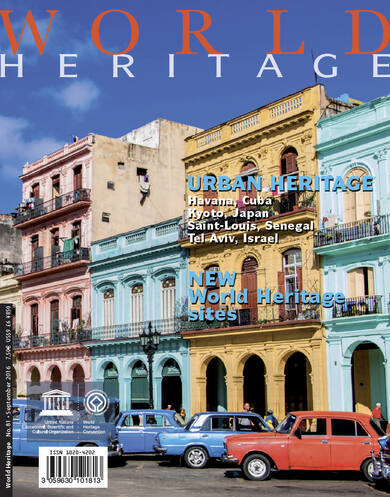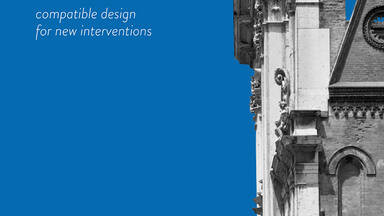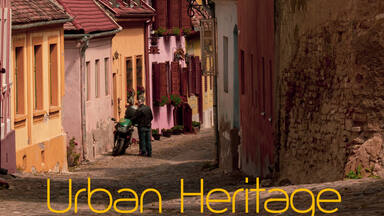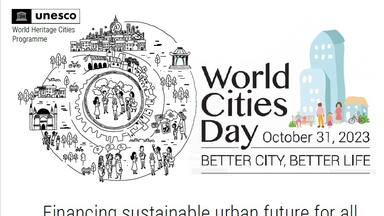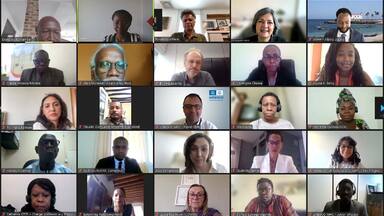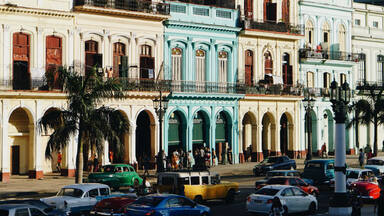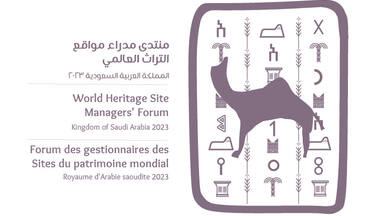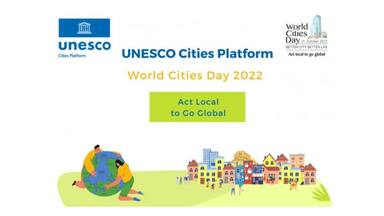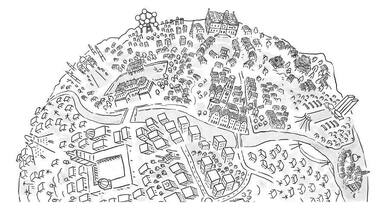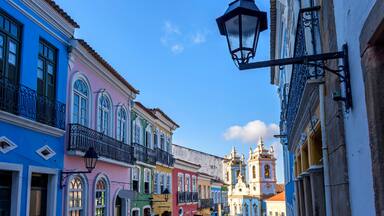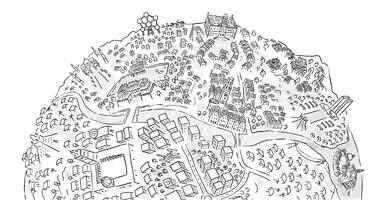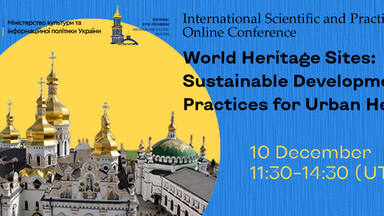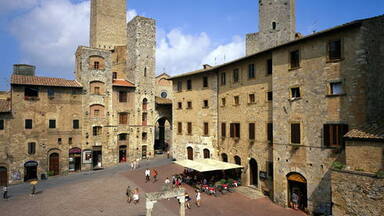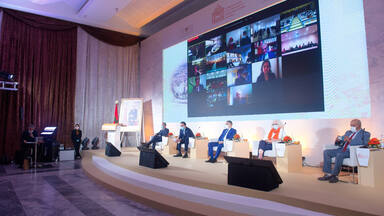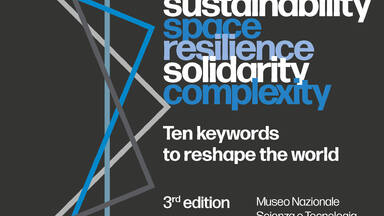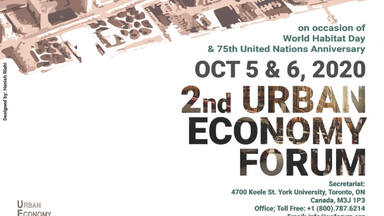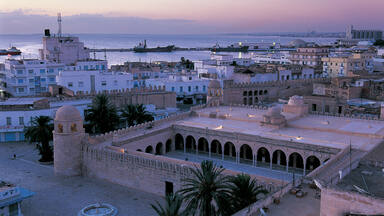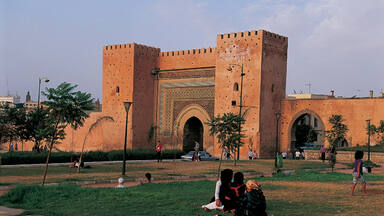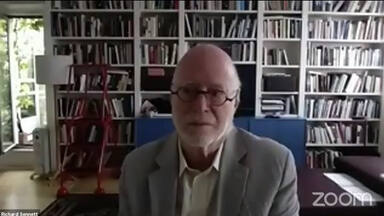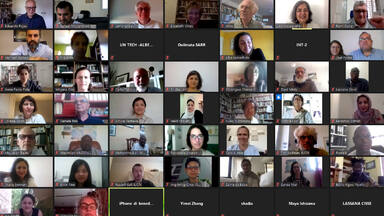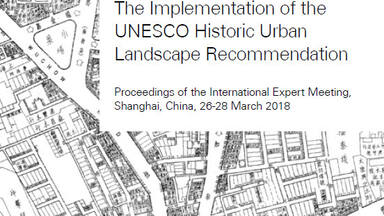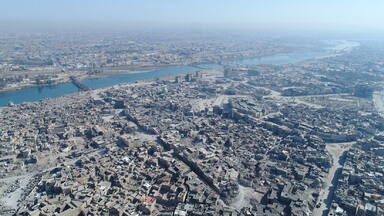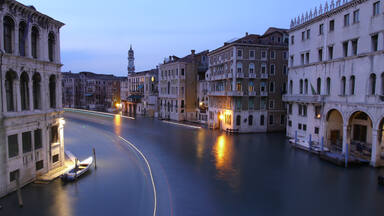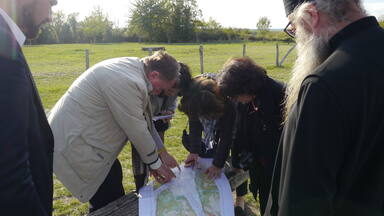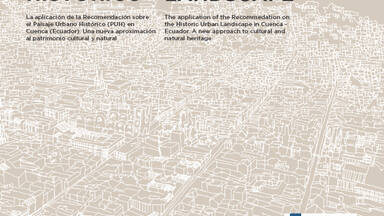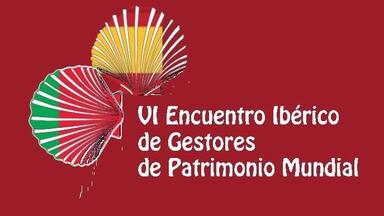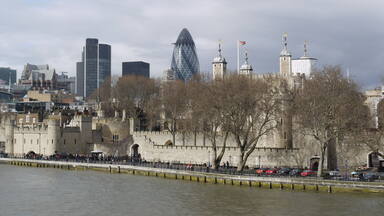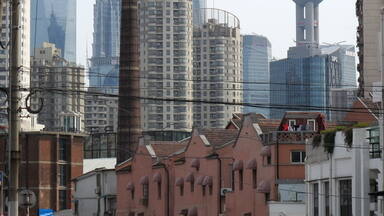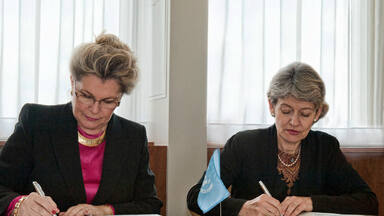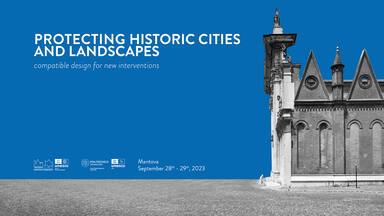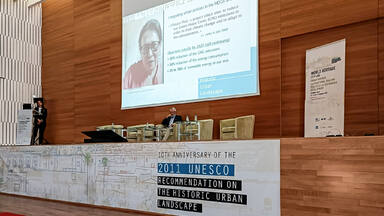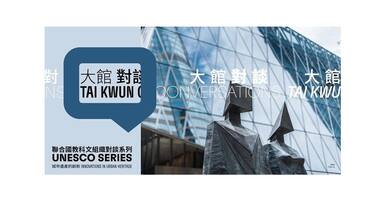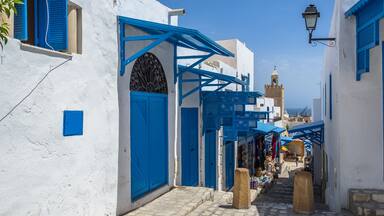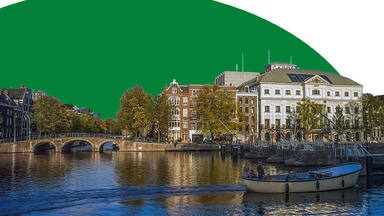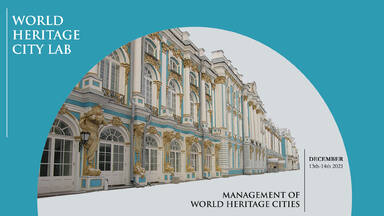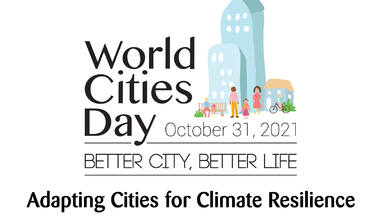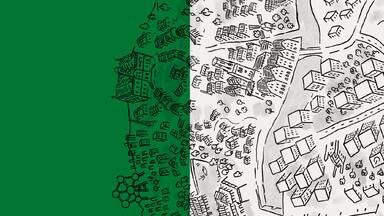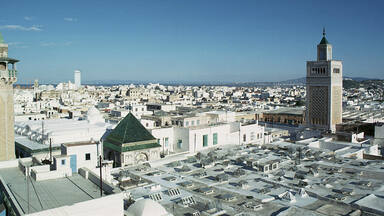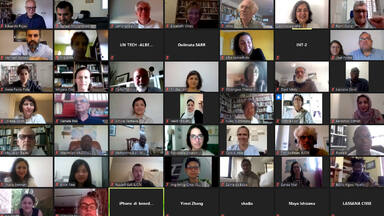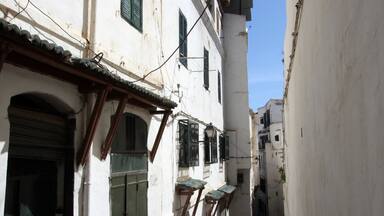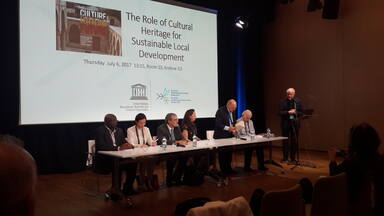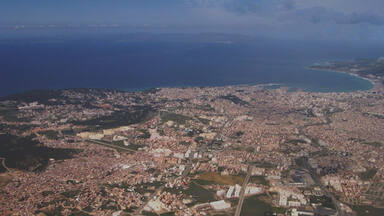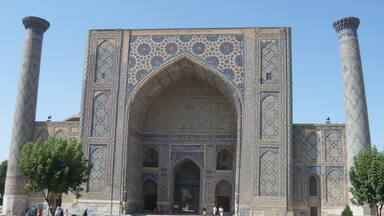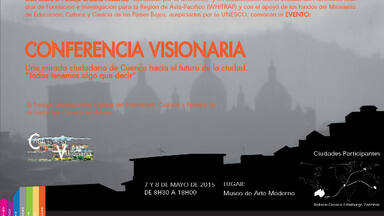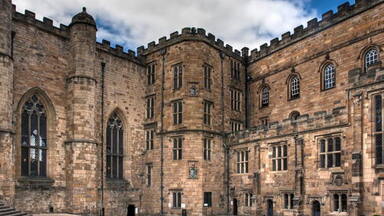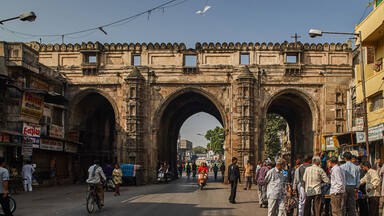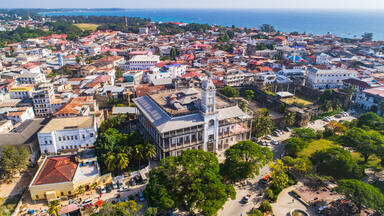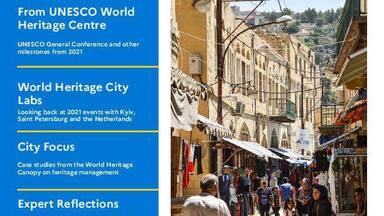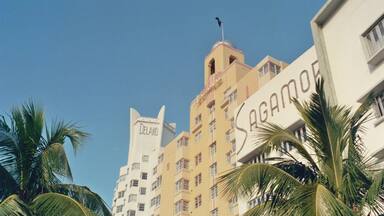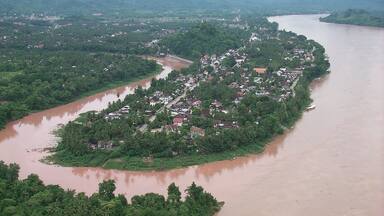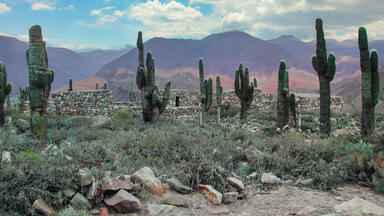News
Learn more about recent and upcoming activities on the HUL Recommendation and urban heritage.
Activities
International capacity-building and knowledge-sharing events bring together heritage experts, city authorities and other stakeholders. These events explore topics relevant to heritage conservation and management today, from good practices and case studies to global links between heritage, climate change and sustainable development.
World Heritage City Lab: Urban Heritage and Traditional Building Practices for Sustainable Development
September 2022, Cordoba, Spain / online.
About the Recommendation on the Historic Urban Landscape
"Urban heritage, including its tangible and intangible components, constitutes a key resource in enhancing the liveability of urban areas, and fosters economic development and social cohesion in a changing global environment. As the future of humanity hinges on the effective planning and management of resources, conservation has become a strategy to achieve a balance between urban growth and quality of life on a sustainable basis."
On 10 November 2011, UNESCO’s General Conference adopted the Recommendation on the Historic Urban Landscape by acclamation, the first such instrument on the historic environment issued by UNESCO in 35 years. The 2011 Recommendation on the Historic Urban Landscape does not replace existing doctrines or conservation approaches; rather, it is an additional tool to integrate policies and practices of conservation of the built environment into the wider goals of urban development in respect of the inherited values and traditions of different cultural contexts.
The 2011 Recommendation is used by the World Heritage Committee to promote a holistic approach to managing historic urban areas. Approximately 1 out of 3 World Heritage sites are urban. More than 50% of all State of Conservation reports examined relate to heritage in urban areas, reflecting the complexities of reconciling urban development with heritage conservation. The 2011 Recommendation helps World Heritage properties in urban contexts find this balance by understanding urban heritage as a system and a resource for sustainable urban development.
Resource materials
The knowledge and experience on HUL Recommendation is growing, you can make use of available resources.
The HUL approach
The HUL Recommendation is a “soft law” to be implemented by Member States on a voluntary basis. In order to facilitate implementation, the UNESCO General Conference recommended that Member States take the appropriate steps to:
- adapt this new instrument to their specific contexts;
- disseminate it widely across their national territories;
- facilitate implementation through formulation and adoption of supporting policies; and to
- monitor its impact on the conservation and management of historic cities.
- Learn more about the HUL Call for Action.
- Consult the e-magazine Urban Notebooks.
- Read the publications Culture: urban future; global report on culture for sustainable urban development and Swahili Historic Urban Landscapes.
- Visit World Heritage Canopy to consult case studies on the implementation of the HUL Recommendation.
- Browse the World Heritage Review on Urban Heritage.
Cross-cutting
The HUL Recommendation does not stand alone in the protection and management of historic cities throughout the world. Its implementation is closely linked to other tools and strategies developed by the United Nations, such as the Sustainable Development Goals, the New Urban Agenda, and the World Heritage Convention.
- SDG 11, Target 11.4 highlights the importance of cultural and natural heritage for making safe and resilient cities. The New Urban Agenda underlines the need for integrated approaches to urban sustainability.
- The Historic Urban Landscape approach addresses the policy, governance and management concerns involving a variety of stakeholders, including local, national, regional, international, public and private actors in the urban development process.
- Having one foot on the Sustainable Development Goal, Target 11.4, and the other on the New Urban Agenda (UN-Habitat), the HUL Recommendation addresses relevant urban issues for the historic urban areas. There are important interlinkages between the Sustainable Development Goals, the New Urban Agenda (UN-Habitat) and UNESCO’s Culture Conventions.
- The World Heritage Cities Programme is one of six thematic programmes formally approved and monitored by the World Heritage Committee. The programme uses the approach of the HUL Recommendation as a tool to reconcile conservation and development in urban World Heritage properties.
- To learn more, visit
- World Heritage Cities Programme
- Understanding urban heritage: applying the approach of the HUL Recommendation in World Heritage Cities
- International Experts Meeting - Heritage in Urban Contexts: Impacts of Development Projects on World Heritage properties in Cities
- Fukuoka Outcomes - 8 step-methodology for the implementation of the HUL Recommendation in World Heritage Cities
- World Heritage City Lab – Management of World Heritage Cities
- Urban sites and historic cities in particular are facing unique challenges related to the risks caused by climate change. Over 90% of all urban areas are coastal, putting most cities on Earth at risk of flooding from rising sea levels and powerful storms. Historic cities are particularly at risk because many of them developed, for historical reasons, along the coast or along major rivers. With rising temperatures and accompanying sea-level rise, the risk of climate change-related disasters is increasing in historic and World Heritage cities.
- The HUL Recommendation is a key tool to help cities to tackle climate action. It presents an integrated, people-centred and landscape approach to urban management, where climate action, DDR, urban development, and energy transition initiatives integrated with heritage conservation and management strategies.
Tools
The approach based on the historic urban landscape implies the application of a range of traditional and innovative tools adapted to local contexts. Some of these tools, which need to be developed as part of the process involving the different stakeholders, might include:
should involve a diverse cross-section of stakeholders, and empower them to identify key values in their urban areas, develop visions that reflect their diversity, set goals, and agree on actions to safeguard their heritage and promote sustainable development. These tools, which constitute an integral part of urban governance dynamics, should facilitate intercultural dialogue by learning from communities about their histories, traditions, values, needs and aspirations, and by facilitating mediation and negotiation between groups with conflicting interests.
should help protect the integrity and authenticity of the attributes of urban heritage. They should also allow for the recognition of cultural significance and diversity, and provide for the monitoring and management of change to improve the quality of life and of urban space. These tools would include documentation and mapping of cultural and natural characteristics. Heritage, social and environmental impact assessments should be used to support and facilitate decision-making processes within a framework of sustainable development.
should reflect local conditions, and may include legislative and regulatory measures aimed at the conservation and management of the tangible and intangible attributes of the urban heritage, including their social, environmental and cultural values. Traditional and customary systems should be recognized and reinforced as necessary.
should be aimed at building capacities and supporting innovative income-generating development, rooted in tradition. In addition to government and global funds from international agencies, financial tools should be effectively employed to foster private investment at the local level. Micro-credit and other flexible financing to support local enterprises, as well as a variety of models of partnerships, are also central to making the historic urban landscape approach financially sustainable.
Publications
The range of publications available on the HUL Recommendation is growing. Browse through this selection to learn more about its approach and implementation.
Video resources
Learn more about the implementation of HUL Recommendation in cities all around the world through case studies, expert lectures and video messages from city leaders.
About the HUL Recommendation and approach
Learn more about the approach of the HUL Recommendation by visiting these short awareness-raising videos that bring attention to the key topics of this normative instrument.
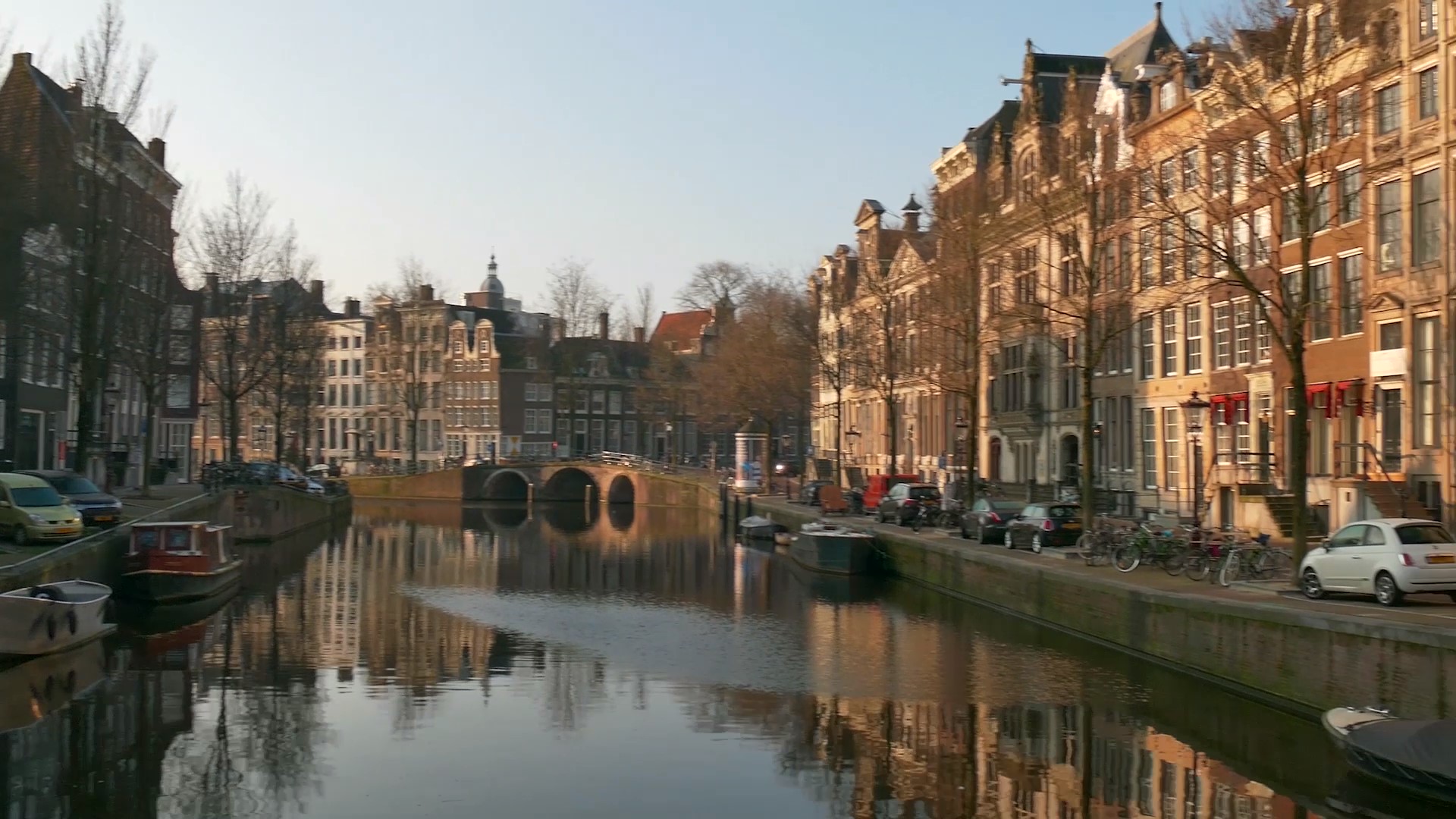
Champions and leaders for historic cities
Learn more about how the HUL Recommendation is implemented in historic cities throughout the world thanks to the video messages from elected representatives, city authorities and more.
Expert lectures
Explore the different approaches of expert practitioners and researchers about the HUL Recommendation and its approach.
Case studies
Which challenges are being faced by historic cities? How can the HUL Recommendation help them to address these challenges? Browse through these videos to learn more. You can also find more examples of case studies on World Heritage Canopy.
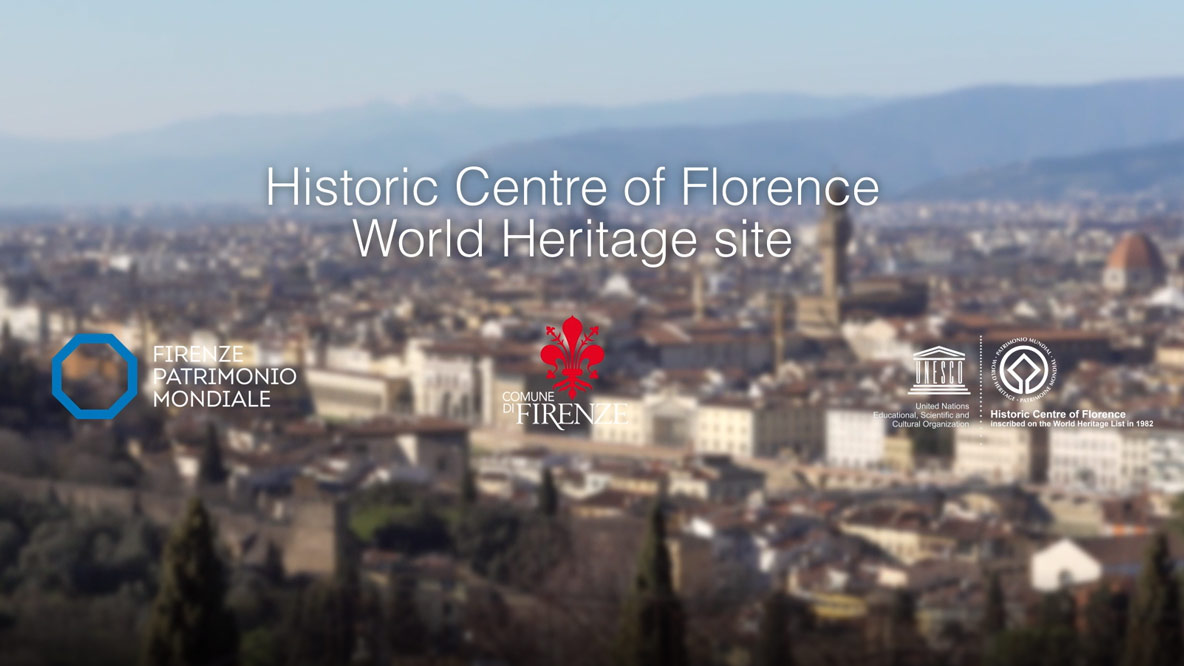
Statutory processes
As a legal instrument, the HUL Recommendation is bound to the statutory processes of UNESCO.
These include the Consultation on its implementation by UNESCO Member States, the General Conference, the Executive Board and the World Heritage Committee.
| Year | Session | Document |
|---|---|---|
| 2021 | 42 C | 40 C/RESOLUTIONS VOL.1 + CORR. |
| 2021 | 42 C | 41 C/5 |
| 2021 | 42 C | 41 C/INF.10 |
| 2019 | 40 C | 40 C/103 |
| 2019 | 40 C | 40 C/37 |
| 2019 | 40 C | 40 C/5 |
| 2019 | 40 C | 40 C/94 |
| 2019 | 40 C | 40 C/INF.10 |
| 2019 | 40 C | 40 C/INF.24 |
| 2019 | 40 C | 40 C/LEG/7 |
| 2017 | 39 C | 39 C/5 Approved + ADD. |
| 2017 | 39 C | 39 C/74 |
| 2017 | 39 C | 39 C/INF.10 |
| 2017 | 39 C | 39 C/RESOLUTIONS |
| 2015 | 38 C | 38 C/71 |
| 2015 | 38 C | 38 C/83 |
| 2015 | 38 C | 38 C/94 |
| 2015 | 38 C | 38 C/INF.24 |
| 2015 | 38 C | 38 C/INF.6 |
| 2015 | 38 C | 38 C/LEG/6 |
| 2015 | 38 C | 38 C/PROCEEDINGS |
| 2015 | 38 C | 38 C/Resolutions |
| 2014 | 37 C | 37 C/INF.7 |
| 2011 | 36 C | 36 C / 36 C Rev (Fre) & ADD |
| 2011 | 36 C | 36 C/23 REV. (Fre only) & ADD. |
| 2011 | 36 C | 36 C/74 |
| 2011 | 36 C | 36 C/COM.CLT/2 |
| 2011 | 36 C | 36 C/INF.24 |
| 2011 | 36 C | 36 C/Resolution 41 |
| 2009 | 35 C | 35 C/42 |
| 2009 | 35 C | 35 C/42 |
| 2009 | 35 C | 35 C/5 APPROVED |
| 2009 | 35 C | 35 C/74 |
| 2009 | 35 C | 35 C/9 PART I-II |
| 2009 | 35 C | 35 C/INF.10 |
| 2009 | 35 C | 35 C/INF.40 |
| 2009 | 35 C | 35 C/Proceedings |
| 2009 | 35 C | 35 C/Resolutions |
| 2009 | 35 C | 35C / Resolution 42 |
| 2009 | 35 C | ERC.2010/WS/5 |
| 2007 | 34 C | 34 C/INF.8 |
| 2005 | 33 C | 33 C/INF.3 |
| 2005 | 33 C | 33 C/REP/14 + ADD. |
|
*Please note: this list is not exhaustive and only includes a selection of documents. Preliminary and draft documents, and agendas are not included. |
||
| Year | Session | Document |
| 2022 | 215 EX | 215 EX/46, Para 16 |
| 2022 | 215 EX | 215 EX/24.I |
| 2022 | 214 EX | 214 EX/13.V |
| 2022 | 214 EX | 214 EX/CR/1 PROV. VER, Item 13V |
| 2022 | 214 EX | 214 EX/30, Item 13.V para. 40 |
| 2022 | 214 EX | 214 EX/13.I, para. 49-54, Annex I, II |
| 2022 | 214 EX | 214 EX/1 PROV. REV.2, Item 13.V |
| 2022 | 214 EX | 214 EX/DECISIONS, Item 13.V |
| 2022 | 214 EX | 214 EX/4.II.A.INF, pages 5-6, 32 |
| 2022 | 214 EX | 214 EX/CR/2, para. 14 |
| 2022 | 214 EX | 214 EX/4.I + Corr., para. 177 |
| 2021 | 213 EX | 213 EX/14.INF, page 8 |
| 2021 | 212 EX | 212 EX/23.I, para. 44-45 |
| 2021 | 212 EX | 212 EX/23.I.INF, page 3-4 |
| 2021 | 212 EX | 212 EX/36.INF, page 17 |
| 2021 | 212 EX | 212 EX/4.II.INF, page 9 -12 |
| 2021 | 212 EX | 212 EX/52, para. 12 |
| 2021 | 211 EX | 211 EX/21.I, para. 40-42 |
| 2021 | 211 EX | 211 EX/4.II.INF + Corr., page 46 |
| 2021 | 211 EX | 211 EX/41, para. 10, 15 |
| 2020 | 210 EX | 210 EX/26.I, para. 37 |
| 2020 | 210 EX | 210 EX/27, Table I - II |
| 2020 | 210 EX | 210 EX/34.INF, page 25 |
| 2020 | 210 EX | 210 EX/47, para. 14, 39 |
| 2020 | 209 EX | 209 EX/18.I + Corr., para. 28-29 |
| 2020 | 209 EX | 209 EX/19, para. 27, 34, 35, 38 |
| 2020 | 209 EX | 209 EX/19, para. 27, 34-35, 38 |
| 2020 | 209 EX | 209 EX/34, para. 10 |
| 2020 | 209 EX | 209 EX/4.I.B, page 58 |
| 2019 | 207 EX | 207 EX/23.I, para. 30 |
| 2019 | 207 EX | 207 EX/23.I.INF, para 2 C |
| 2019 | 207 EX | 207 EX/53, para. 11 |
| 2019 | 206 EX | 206 EX/1 REV., Item 25.V |
| 2019 | 206 EX | 206 EX/25.I, para. 33-34 |
| 2019 | 206 EX | 206 EX/25.V, para. 1-2, 21 |
| 2019 | 206 EX | 206 EX/26, ref.1 |
| 2019 | 206 EX | 206 EX/27.I, Item 9.5 |
| 2019 | 206 EX | 206 EX/27.II, Item 9.5 |
| 2019 | 206 EX | 206 EX/45, para.14, 28-29, 31 |
| 2019 | 206 EX | 206 EX/CR/1 PROV., 25.V |
| 2019 | 206 EX | 206 EX/DECISIONS, para 25.V |
| 2019 | 206 EX | 206 EX/SR.1-7 + Corr., Item 25.V |
| 2018 | 205 EX | 205 EX/19, para. 39-41 |
| 2018 | 205 EX | 205 EX/19, para. 40-42 |
| 2018 | 205 EX | 205 EX/3 INF.2, para. 3 |
| 2018 | 205 EX | 205 EX/30.INF.2 REV. |
| 2018 | 205 EX | 205 EX/36 + CORR., para. 12 |
| 2018 | 205 EX | 205 EX/41, para. 14 |
| 2018 | 204 EX | 204 EX/18 PART I-VI + PART IV CORR., para. 39, 41 |
| 2018 | 204 EX | 204 EX/33, para.11, 13 |
| 2018 | 204 EX | 204 EX/4.INF + CORR., Annex III.B |
| 2018 | 204 EX | 204 EX/CR/2, para. 14 |
| 2017 | 202 EX | 201 EX/39 |
| 2017 | 202 EX | 201 EX/4.INF |
| 2017 | 202 EX | 202 EX/24 PART I-VII |
| 2017 | 202 EX | 202 EX/24.INF |
| 2017 | 202 EX | 202 EX/32.INF.2 |
| 2017 | 202 EX | 202 EX/46 |
| 2017 | 202 EX | 202 EX/SR.1-12 Item 24.VI |
| 2017 | 201 EX | 201 EX/19 Part I – page 9, para. 44-49 |
| 2017 | 201 EX | 201 EX/28, para. 2 |
| 2017 | 201 EX | 201EX/39, para. 11 |
| 2016 | 200 EX | 200 EX/13 PART I + CORR, (A),(B),(C) & -II (+corr) -III -IV – para. 21, 63, 67, 78, 60, 232, 236, 238, 239 |
| 2016 | 200 EX | 200 EX/16 Part I – page 11, para. 48-52 |
| 2016 | 200 EX | 200 EX/33 – page 2 , para. 8 |
| 2016 | 199 EX | 199 EX/14 Part I –para. 42-45 |
| 2016 | 199 EX | 199 EX/4 Part I (B) – page 41, para. 214 |
| 2016 | 199 EX | 199 EX/BROCHURE CR – para. 14 |
| 2016 | 199 EX | 199 EX/CR/2 REV – para. 14 |
| 2015 | 197 EX | 197 EX/20 Part I – para. 38-39, Part IV, para. 1-24 |
| 2015 | 197 EX | 197 EX/20.INF – C |
| 2015 | 197 EX | 197 EX/4.INF.2 - ANNEX II |
| 2015 | 197 EX | 197 EX/49 – para. 20-26 |
| 2015 | 197 EX | 197 EX/DECISIONS – IV |
| 2015 | 196 EX | 196 EX/19 Part I –para. 36 |
| 2015 | 196 EX | 196 EX/4.INF.2 - Annex II |
| 2015 | 196 EX | 196 EX/5 Part I – Priority 3 |
| 2014 | 195 EX | 195 EX/15 – para. 47-50 |
| 2014 | 195 EX | 195 EX/37 – para. 10 |
| 2014 | 194 EX | 194 EX/21 – para. 32- 34 |
| 2014 | 194 EX | 194 EX/4 PART I A (+ Add.Rev.2), II, III, IV (+ ADD.) + ADD 2 – para. 935, 766, 1063 |
| 2014 | 194 EX | 194 EX/4.INF.2 |
| 2014 | 194 EX | 194 EX/BROCHURE CR – para. 14 |
| 2014 | 194 EX | 194 EX/BROCHURE CR – para. 14 |
| 2014 | 194 EX | 194 EX/CR/2 – para. 14 |
| 2014 | 194 EX | 194 EX/CR/2 – para. 14 |
| 2013 | 192 EX | 192 EX/20.INF –D |
| 2013 | 192 EX | 192 EX/4 PART I (A,B)-IV + PART III ADD+ ADD.2 |
| 2013 | 192 EX | 192 EX/4.INF.2 |
| 2013 | 191 EX | 191 EX/4 – para. 451 |
| 2013 | 191 EX | 191 EX/4.INF |
| 2013 | 191 EX | 191 EX/AHPG.INF – para. 202, 266 |
| 2013 | 191 EX | 191 EX/NGP/2 |
| 2012 | 190 EX | 190 EX/38 – para. 11 |
| 2012 | 190 EX | 190 EX/5– 4b, 4c |
| 2012 | 189 EX | 189 EX/19 |
| 2012 | 189 EX | 189 EX/INF.12 |
| 2012 | 189 EX | 189 EX/NGP/2 – para. 26, 61 |
| 2012 | 189 EX | 189 EX/SR.1-7 –56.12 |
| 2011 | 187 EX | 187 EX/23 – para. 6 |
| 2011 | 187 EX | 187 EX/INF.4 |
| 2011 | 186 EX | 186 EX/14 PART II-IX – para. 3, 27 |
| 2011 | 186 EX | 186 EX/20 – para. 6 |
| 2011 | 186 EX | 186 EX/21 – para. 6, Annex |
| 2011 | 186 EX | 186 EX/22 – 8.1 |
| 2011 | 186 EX | 186 EX/4 – para. 882 |
| 2011 | 186 EX | 186 EX/42 – para. 3bis |
| 2011 | 186 EX | 186 EX/INF.6 |
| 2010 | 185 EX | 185 EX/1 + ADD |
| 2010 | 185 EX | 185 EX/17 – para. 66 |
| 2010 | 185 EX | 185 EX/2 + ADD |
| 2010 | 185 EX | 185 EX/46 |
| 2010 | 185 EX | 185 EX/DECISIONS – para. 46 |
| 2010 | 185 EX | 185 EX/SR.1-10 – para. 46 |
| 2010 | 185 EX | 185EX/Decision 46 |
| 2010 | 184 EX | 184 EX/SR.1-9 – 12.23 |
| 2008 | 179 EX | 179 EX/25 |
| 2008 | 179 EX | 179 EX/Decision 25 |
|
*Please note: this list is not exhaustive and only includes a selection of documents. Preliminary and draft documents, and agendas are not included in this list. |
||
| Year | Committee | Decision | Title |
| 2021 | 44 COM | 44 COM 7.2 | Conservation issues |
| 2021 | 44 COM | 44 COM 7A.18 | Ancient City of Aleppo (Syrian Arab Republic) |
| 2021 | 44 COM | 44 COM 7A.4 | Tombs of Buganda Kings at Kasubi (Uganda) |
| 2021 | 44 COM | 44 COM 7B.117 | Asmara: a Modernist City of Africa (Eritrea) |
| 2021 | 44 COM | 44 COM 7B.122 | Koutammakou, the Land of the Batammariba (Togo) |
| 2021 | 44 COM | 44 COM 7B.123 | Kasbah of Algiers (Algeria) |
| 2021 | 44 COM | 44 COM 7B.13 | Historic Cairo (Egypt) |
| 2021 | 44 COM | 44 COM 7B.130 | Byblos (Lebanon) |
| 2021 | 44 COM | 44 COM 7B.133 | Ksar of Ait-Ben-Haddou (Morocco) |
| 2021 | 44 COM | 44 COM 7B.134 | Rabat, Modern Capital and Historic City: a Shared Heritage (Morocco) (C 1401) |
| 2021 | 44 COM | 44 COM 7B.136 | Historic Jeddah, the Gate to Makkah (Saudi Arabia) (C 1361) |
| 2021 | 44 COM | 44 COM 7B.33 | Kathmandu Valley (Nepal) |
| 2021 | 44 COM | 44 COM 7B.38 | Historic Centre of Bukhara (Uzbekistan) |
| 2021 | 44 COM | 44 COM 7B.40 | Samarkand – Crossroad of Cultures (Uzbekistan) |
| 2021 | 44 COM | 44 COM 7B.44 | Historic Centre of Prague (Czechia) (C 616bis) |
| 2021 | 44 COM | 44 COM 7B.49 | Budapest, including the Banks of the Danube, the Buda Castle Quarter and Andrássy Avenue (Hungary) |
| 2021 | 44 COM | 44 COM 7B.50 | Venice and its Lagoon (Italy) |
| 2019 | 43 COM | 43 COM 7.3 | Other matters |
| 2019 | 43 COM | 43 COM 7A.26 | Old Town of Ghadamès (Libya) |
| 2019 | 43 COM | 43 COM 7A.31 | Ancient City of Aleppo (Syrian Arab Republic) (C 21) |
| 2019 | 43 COM | 43 COM 7A.44 | Historic Centre of Shakhrisyabz (Uzbekistan) |
| 2019 | 43 COM | 43 COM 7B.104 | Asmara: A Modernist African City (Eritrea) |
| 2019 | 43 COM | 43 COM 7B.40 | Historic Centre of Shakhrisyabz (Uzbekistan) |
| 2019 | 43 COM | 43 COM 7B.42 | Qal’at al-Bahrain – Ancient Harbour and Capital of Dilmun (Bahrain) |
| 2019 | 43 COM | 43 COM 7B.44 | Historic Cairo (C 89) |
| 2019 | 43 COM | 43 COM 7B.50 | Tyre (Lebanon) |
| 2019 | 43 COM | 43 COM 7B.51 | Ksar of Ait-Ben-Haddou (Morocco) |
| 2019 | 43 COM | 43 COM 7B.52 | Rabat, Modern Capital and Historic City: a Shared Heritage (Morocco) |
| 2019 | 43 COM | 43 COM 7B.57 | Historic Centre of Macao (China) |
| 2019 | 43 COM | 43 COM 7B.59 | West Lake Cultural Landscape of Hangzhou (China) |
| 2019 | 43 COM | 43 COM 7B.60 | Historic Monuments and Sites in Kaesong (Democratic People's Republic of Korea) |
| 2019 | 43 COM | 43 COM 7B.77 | Samarkand –Crossroad of Cultures (Uzbekistan) |
| 2019 | 43 COM | 43 COM 7B.78 | Historic Centre of Bukhara (Uzbekistan) |
| 2019 | 43 COM | 43 COM 7B.79 | Historic Centres of Berat and Gjirokastra (Albania) |
| 2019 | 43 COM | 43 COM 7B.84 | Budapest, including the Banks of the Danube, the Buda Castle Quarter and Andrássy Avenue (Hungary) |
| 2019 | 43 COM | 43 COM 7B.90 | Diyarbakır Fortress and Hevsel Gardens Cultural Landscape (Turkey) |
| 2019 | 43 COM | 43 COM 7B.98 | Historic Quarter of the Seaport City of Valparaíso (Chile) |
| 2018 | 42 COM | 42 COM 5A | Report of the World Heritage Centre on its activities and the implementation of the World Heritage Committee’s decisions |
| 2018 | 42 COM | 42 COM 7A.30 | Ancient City of Aleppo (Syrian Arab Republic) |
| 2018 | 42 COM | 42 COM 7A.4 | Historic Centre of Shakhrisyabz (Uzbekistan) |
| 2018 | 42 COM | 42 COM 7B.38 | City of Quito (Ecuador) |
| 2018 | 42 COM | 42 COM 7B.43 | Aksum (Ethiopia) |
| 2018 | 42 COM | 42 COM 7B.47 | Island of Mozambique (Mozambique) |
| 2018 | 42 COM | 42 COM 7B.58 | Historic Jeddah, the Gate to Makkah (Saudi Arabia) |
| 2017 | 37 COM | 37 COM 7A.26 | Old City of Jerusalem and its Walls (site proposed by Jordan) |
| 2017 | 41 COM | 41 COM 10A | Report on the Periodic Reporting Reflection (2015-2017) and launch of the Third Cycle |
| 2017 | 41 COM | 41 COM 7 | State of conservation of the properties inscribed on the World Heritage List |
| 2017 | 41 COM | 41 COM 7A.44 | Ancient City of Aleppo (Syrian Arab Republic) |
| 2017 | 41 COM | 41 COM 7B.40 | Historic Centres of Berat and Gjirokastra (Albania) |
| 2017 | 41 COM | 41 COM 7B.60 | Historic Quarter of the Seaport City of Valparaíso (Chile) |
| 2017 | 41 COM | 41 COM 7B.73 | Kasbah of Algiers (Algeria) |
| 2017 | 41 COM | 41 COM 7B.75 | Qal’at al-Bahrain –Ancient Harbour and Capital of Dilmun (Bahrain) |
| 2017 | 41 COM | 41 COM 7B.84 | Ksar Ait Ben Haddou (Morocco) |
| 2017 | 41 COM | 41 COM 7B.99 | Historic Centre of Bukhara (Uzbekistan) |
| 2016 | 40 COM | 40 COM 7A.29 | Historical Monuments of Mtskheta (Georgia) |
| 2016 | 40 COM | 40 COM 7B.5 | City of Quito (Ecuador) |
| 2016 | 40 COM | 40 COM 7B.57 | Historic Centre of the City of Yaroslavl (Russian Federation) |
| 2015 | 39 COM | 39 COM 7B.46 | Kasbah of Algiers (Algeria) |
| 2015 | 39 COM | 39 COM 7B.67 | Meidan Emam, Esfahan (Iran, Islamic Republic of) |
| 2015 | 39 COM | 39 COM 7B.72 | Historic Centre of Bukhara (Uzbekistan) (C 602rev) |
| 2015 | 39 COM | 39 COM 7B.73 | Samarkand - Crossroad of Cultures (Uzbekistan) |
| 2012 | 36 COM | 36 COM 13.I | Revision of the Operational Guidelines |
| 2012 | 36 COM | 36 COM 13.II | Revision of the Operational Guidelines |
| 2010 | 34 COM | 34 COM 7.1 | Historic Urban Landscape |
| 2005 | 29 COM | 29 COM 5D | Report of the World Heritage Centre on its Activities and on the Implementation of the Decisions of the World Heritage Committee |
Consultations on the implementation of the HUL Recommendation by UNESCO Member States
First UNESCO Member State Consultation (2015)
The Consolidated Report contains an overall description on the conventions and recommendations of UNESCO that the Committee on Conventions and Recommendations is required to monitor, and an analysis of specific measures adopted by the Secretariat within the framework of the monitoring of the implementation of standard-setting instruments and the difficulties encountered for each of the instruments, since the 195th session of the Board.
Second UNESCO Member State Consultation (2019)
The Report of the Second Consultation is based on the data gathered by the survey sent by the Director-General in February 2018 to UNESCO Member States, requesting the submission of national reports and focal points. Responses from 55 Member States were received. The data shows that some progress has been made in implementing key concepts of the Recommendation, yet much remains to be done. In the implementation of the HUL approach, it is crucial to establish links between national/federal and local level decision makers at the country level.
Third UNESCO Member State Consultation (2022)
The Consolidated Results of the implementation of the 2011 Recommendation on the Historic Urban Landscape are based on an assessment of the urban heritage situation for the period 2019-2022, where UNESCO Member States were invited to complete the survey to report on their implementation of the 2011 Recommendation. Progress in the Member States’ implementation of the 2011 Recommendation since the Second Consultation in 2019 is evident and encouraging, with reports received from 69 Member States with 62 national reports and 125 local reports out of the 193 Member States and 11 Associate Member States. The 2011 Recommendation is more relevant today than ever as cities and urban heritage face many complex global challenges and seek sustainability, inclusion, and climate resilience. The data shows the progress made by several Member States in implementing the Recommendation as well as the urgency to implement it more widely and effectively.
Learn moreWe gratefully acknowledge the support of
